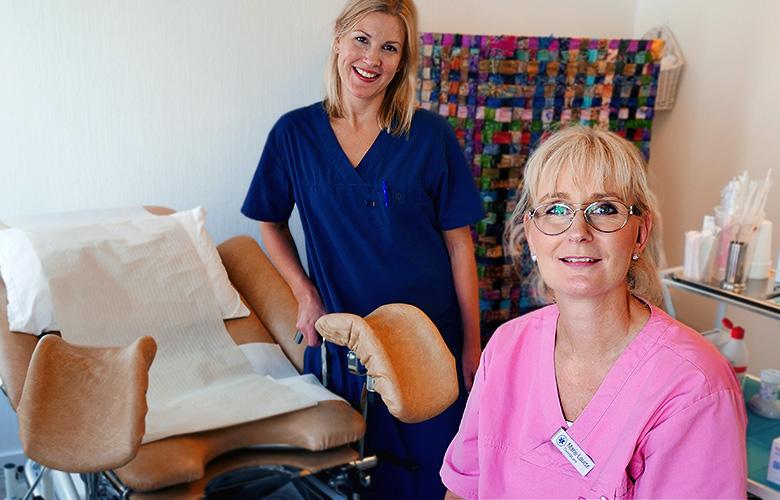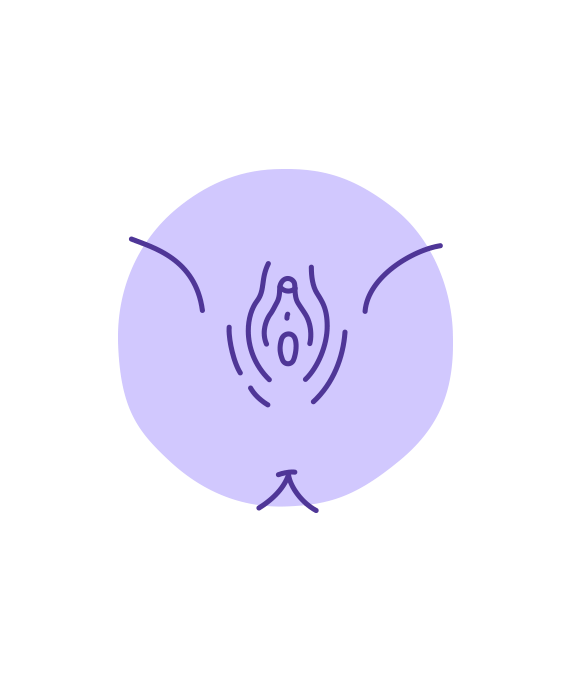Nervous, stiff, a bit cold? In this text we will tell you all about what is done during a gynecological examination. So that you know what to expect before, during and after your visit.

Introductory meeting
Most of the time, the gynecologist will receive you alone before the examination and start with a conversation about your issues. To understand the root of the problem, the gynecologist will ask questions and follow-up questions. Here, your own mapping and documentation can be of great help.
The whole visit at the gynecologist will take around 20-30 minutes.
Time for the examination!
After the conversation, it's time for the examination. To facilitate the examination, you need to take off your clothes from your belly and down. Usually there is a curtain that you can undress behind, or sometimes even a dressing room, and you may also get a towel or sheet to cover yourself with while going to the examination.
In the examination room you will seat yourself in a tall chair that has two holders for your legs. You will climb up into the chair and lean back while the gynecologist sits between your legs to perform the examination of your genital area.
Remember!
You are always in charge of your own body and have the right to end the examination any time you don't feel comfortable.
Remember that those working with issues connected to menstruation don't think that there is anything weird or strange about the genital area. If your bleedings have started during the examination, there is no problem. Don't forget that for the gynecologists, the focus is on the anatomy, how the body parts are connected and constructed, they don't focus on looks. It's like when a dentist is looking at your teeth!

What is done during a gynecological examination?
1. During the first part of the examination the gynecologist will look at the outside of your vagina.
2. Thereafter, they will carefully separate the labias and insert an instrument in the vagina that will push down on the vagina’s walls so that the cervical pin becomes visible. To make the examination as comfortable as possible the gynecologist will use a gel that will work like lube, facilitating the insertion of the instrument. This can feel a bit cold.

3. When the instrument is taken out the examination continues with that the gynecologist puts two fingers inside your vagina at the same time as the other hand pushes down carefully on your uterus and ovaries to make sure that there are no cysts or pain in that area. Pain could mean that you had an infection or inflammation.
4. After this part of the examination it's time for the ultrasound that will be done with an implement around 2 cm in diameter. Also, this implement is covered in gel to enter easier. You can look inside yourself by turning to the monitor on the side of the examination chair.
Conversation about possible treatment
When the examination itself is finished, it’s time to talk about the treatment. The reasons for menstrual pain can be many, but they are usually all treated by hormones. It may be pills, hormone spirals, band-aids and so on. Sometimes, in case of severe pain, the gynecologist can also prescribe you stronger painkillers, but that is not that common.
All hormonal treatments offered require a prescription from a doctor. You have to go and get them at a pharmacy. At the pharmacy you will show your ID card to get your prescribed treatment. If you chose a hormone spiral, you will have to make an appointment to see a midwife for the insertion, something that the gynecologist will tell you about.
If the examination has shown that you have cysts or something else that needs treatment, the gynecologist will refer you to a hospital. You will later receive an invitation to another examination and possible surgery.
After a couple of months, you will know if the treatment has been effective - it takes up to three months for pills and band-aids, and up to six months for IUDs.
If your menstrual pain is not decreased despite the treatment you should of course contact the gynecologist for a new examination. If you are not satisfied with your visit with this particular gynecologist you have the right to see a new one. This is after all about you and your life.
Glossary
*IUD - A tiny plastic or copper device that's put inside your uterus to prevent pregnancy. It’s long-term, and reversible protection.
